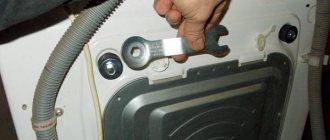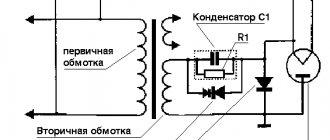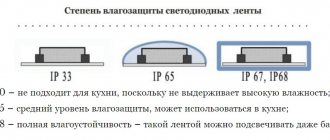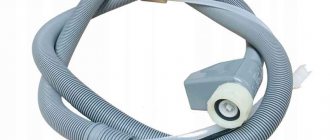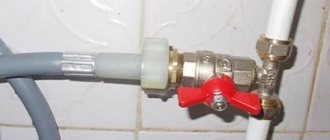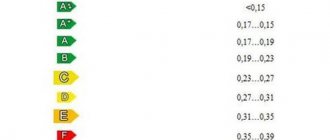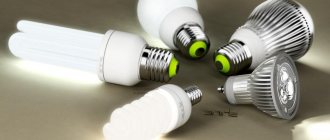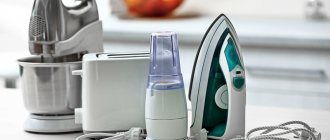Author of the article
Alexander Georgievich Kondratiev
An electrical engineer by training, he worked as an electronics engineer, chief engineer at a food company, and general director of a construction organization.
Many people are interested in how much water and electricity a washing machine consumes. The constant increase in tariffs forces us to use the machine less often. When purchasing a new washing machine, water and energy consumption are taken into account. We calculated how much resources she spends. The good news is that the numbers weren't particularly impressive.
What affects energy consumption
One of the indicators of economical operation is energy consumption. Electricity consumption is influenced by various factors:
- Power of the installed electric motor.
- Operating modes that provide optimal conditions for washing clothes.
- The amount of dirty raw materials deposited at a time.
- How dirty the laundry is loaded into the drum.
- Supply water temperature. The colder it is, the more electrical energy is required to heat it.
The energy consumption of the washing machine is indicated in the passport. During the washing process, the power varies from 300 W to 2 kW. Depends on the brand of the car and the selected mode. For one full cycle, electricity consumption ranges from 0.8 to 2 kW.
How much electricity is consumed to heat water depends on the heating elements installed in the unit. Thus, consumption is determined by the washing mode and engine power.
It should be taken into account that the passport contains data from laboratory tests, which differ significantly from the real ones. The discrepancy can be up to 20% upward.
Consumption nodes
The number of kilowatts consumed by the machine during washing depends on the energy consumption of all components. The sum of their powers determines the total power of the device.
Engine
The motor is the main component of the unit, rotating the drum and consuming most of the total electricity consumed. The following types of engines are installed on modern washing machines:
- collector;
- inverter;
- brushless.
The electric motor is an important element of the washing machine, since the rotation of the drum depends on its operation.
Two-phase asynchronous electric motors are considered obsolete and therefore are not installed on modern models. Commutator motors are quite noisy and have a short service life, which is explained by wear of the brushes.
Modern household appliances have different types of motors - inverter, commutator and asynchronous.
The most advanced units have brushless motors, characterized by low noise levels, a long service life (more than 10 years) and a 20% reduction in energy consumption. On average, the motor power varies from 0.4 to 0.8 kW.
Power varies depending on the engine. Typically it ranges from 0.4 to 0.8 kW/hour.
Note! During the spin process, power consumption increases.
heating element
The heating element is necessary to heat the water located in the drum to the temperature required by the selected washing program. Depending on the set mode, it may either not be used at all, or work at full capacity.
A heating element or electric heater is designed to heat the water in the machine drum to the temperature required for a specific washing mode.
The power of the heating element determines the rate of heating of water and, consequently, the operating time of the heating device itself. Modern parts have a consumption level of 1.7–3 kW.
The electric heater consumes from 1.7 to 2.9 kW/hour. Accordingly, the more electricity is consumed, the faster the water heats up.
Drain pump
This device pumps water out of the drum at certain moments of the wash, in accordance with the established program. It usually takes the form of an impeller, which is rotated by a miniature electric motor. At the inlet, the blades pump water into the tank, and at the outlet, they push it into the drain hose. The pump consumes little, only about 25-45 W/hour.
It can be used once or several times per wash program and consumes an average of 25-45 W/hour.
Control block
This is the most important unit that controls the operation of the entire unit. It consists of an indication panel, a central processor, a power supply, a sensor, starting capacitors and a number of other parts. However, even with this number of elements, the unit consumes only 10-15 Wh.
The control unit's consumption is low. Only 10 to 15 watts per hour.
Energy class
The energy consumption class is indicated by letters of the Latin alphabet from A to G in kW/kg of laundry. The machines of the subgroup designated by the letter A have the lowest consumption.
In subgroups, “+” signs are used. The more there are, the more economical the unit is. The power consumption of the washing machine is shown in the table below.
| Energy class | Electricity consumption when washing 1 kg of dry laundry |
| A+++ | 0.11 kW/kg |
| A++ | 0.15 kW/kg |
| A+ | 0.17 kW/kg |
| A | 0.17-0.19 kW/kg |
| IN | 0.19-0.23 kW/kg |
| WITH | 0.23-0.27 kW/kg |
| D | 0.27-0.31 kW/kg |
| E | 0.31-0.35 kW/kg |
| F | 0.35-0.39 kW/kg |
| G | More than 0.39 kW/kg |
The industry has stopped producing equipment below class C as economically unprofitable. You can still find such models on sale, but few people buy them. In one cycle they “eat up” 1 kW or more.
Energy consumption table for household appliances
For each home, the number of electrical devices, the value of their electricity consumption and the duration of operation will be different. The table below for energy consumption of household appliances contains average information:
| Device name | power, kWt | Operating time per day, h | Consumption per day, kWh | Consumption per month, kWh |
| Fridge | 0,15-0,6 | 24 | 3,6-8,6 | 10,8-25,8 |
| Lighting (10 lamps 20 W each) | 0,020 | 5 | 0,1 | 3 |
| Washing machine | 1-2,2 | 1 | 1-2,2 | 20-30 |
| Vacuum cleaner | 0,65-2,2 | 15 minutes | 0,16-0,55 | 1,6-5,5 |
| TV | 0,1-0,3 | 5 | 0,5-1,5 | 15-30 |
| Microwave | 1,5 | 30 minutes | 0,75 | 10-15 |
| Electric kettle | 0,7-3 | 15 minutes | 0,25-0,75 | 7,5-16,5 |
| Computer | 0,1-0,2 | 5 | 0,5-1 | 7-20 |
| Iron | 1,1 | 15 | 0,3 | 5-8 |
| Dishwasher | 0,5-2,8 | 1 | 0,5-2,8 | 7,5-15 |
| Multicooker | 0,2-2,4 | 1 | 0,2-2,4 | 2-24 |
| Food processor | 0,2-2,0 | 15 minutes | 0,05-0,5 | 0,5-3 |
| Air conditioner | 0,7-1,3 | 7 | 3,5-8 | 15-35 |
| Hairdryer | 1,2-1,5 | 15 minutes | 0,3-0,4 | 5-7 |
| Heater | 1,5 | 5 | 7,5 | 75 |
| Electric stove | 2-8,5 | 3 | 5-10 | 30-150 |
| Coffee maker | 1,5-3,5 | 15 minutes | 0,3-0,8 | 5-10 |
| Hood | 0,1-0,5 | 3 | 0,3-1,5 | 3-4,5 |
How much electricity does a washing machine consume?
Electricity consumption depends on the model, energy consumption class, and selected mode. To calculate, you need to multiply the data from your passport by the tariff in force in the city of residence.
But the data will be incomplete. It is necessary to take into account the number of washes per month. On the Internet you can find information that consumption depends on the design of the machine. This is partly true. But automatic washing machines with the same parameters, front-loading or horizontally loading, consume the same amount of electricity.
Electricity consumption will depend on the selected program and the set water temperature.
Let's take a modern popular model as an example, the Whirlpool FWSD 81283 WCV washing machine:
- Consumption class A+++ with a consumption of 0.11 kW/kg;
- Full load is 8 kg;
- We determine the consumption for one cycle 0.11*8=0.88 kW;
- We take the tariff of the city, for example, in Kursk it is 4.03. We multiply the obtained data by the tariff in kW 0.88 * 4.03 = 3.55 rubles.
We got the approximate electricity consumption for one wash. The average family does laundry 10 times a month. The resulting value is 3.55 rubles. Multiply by 10, we get 35.5 rubles. per month.
But this is a calculated value. It must be adjusted to obtain real values, that is, increased by approximately 15%. We get an approximate consumption of a washing machine per month of 41 rubles.
Often, measuring instruments are installed to accurately determine energy consumption. Perform a washing cycle with maximum load, monitoring the entire process using instruments.
The unit consumes different amounts of electricity in different operating modes. For example, when heating water and simultaneously slowly turning the drum, maximum power consumption occurs.
When draining the water it is minimal. The average value is taken for calculation. To obtain accurate data, connect an electric meter to the washing machine and record the initial readings. After the end of the cycle, the result is obtained, which is multiplied by the tariff.
How to save electricity
In conclusion, we will give 3 tips for saving energy consumption of an automatic washing machine:
- Load the car completely. Don't wash one T-shirt at a time. Electricity consumption will be almost the same as when fully loaded.
- Lower spin speed. There is no need to set maximum spin speeds without an objective reason for this. At higher speeds, the engine consumes a little more current, and not all things can be spun at that speed. This also applies to the water temperature; you should not set it to the maximum; most stains can be washed off in warm water. It is better to pre-soak particularly dirty laundry.
- Clean the machine at least once every six months. A heating element in scale heats the water longer, which means you will pay more for it. Use special products or remember the folk method of cleaning heating elements with citric acid. Pour 200 grams of citric acid dissolved in warm water into an empty washing machine instead of powder and turn on the washing mode at maximum temperature.
Now you know how much electricity a washing machine consumes and how much you will have to pay for it in rubles per month and year. We hope the calculations and tips provided were useful to you!
What affects water consumption
The efficiency of the unit is not limited to electricity consumption. In order to wash clothes, you will need cold water. According to statistics, a family of three spends up to 25% of their total monthly water consumption on laundry. And this is a significant amount of utility bills.
We will not consider rotary-type cars that our grandmothers and mothers bought. A modern washing machine consumes from 35 to 85 liters in one full cycle.
These are averaged data obtained empirically in the laboratory of the manufacturer. However, the real numbers are higher.
The following factors influence water consumption:
- Drum volume. The larger it is, the more liquid is required for washing.
- Contamination of raw materials. Dirty bedding takes longer to wash and rinse.
- Selected mode. An incorrectly selected mode increases water consumption.
- Incomplete loading of the drum is economically unprofitable. You have to run the washer several times to wash what can be washed at once.
There is a misconception that liquid consumption depends on water heating. However, heating does not affect water consumption.
Additional parameters affecting energy consumption
As mentioned above, the amount of energy consumed is influenced by a number of factors that you should pay attention to when starting to wash. Correctly selected mode of operation of the device will help to avoid unjustified costs and will significantly increase the service life of the machine.
- The selected program has a great influence on energy consumption. The first thing you should pay attention to is the water temperature. It’s easy to guess that the higher it is, the more electricity is spent on heating. The duration of work is also of considerable importance; the longer the program, the more energy is spent on rotating the drum.
- The weight of the laundry in the drum also affects the amount of energy consumed. The heavier the drum, the more difficult it is to spin it, the more the electric motor consumes.
- Fabric type. Different types of fabric absorb water differently. Everyone knows that wet fabric is heavier, therefore, a thing that has taken on water becomes even heavier, making it more difficult for the drum to rotate.
- Drying program. This useful feature in all respects is characterized by high energy consumption. If the goal is to save money, you should think about the feasibility of drying.
- Device service life. Over time, everything wears out. A washing machine that has already served for several years is guaranteed to consume more than a similar one from the store. The main reason is scale that has formed on the heater. The thicker its layer, the longer the water takes to heat up, the greater the energy consumption.
It is also worth mentioning the fact that a machine that is in standby mode continues to consume energy. Its amount is insignificant, but if the machine is constantly plugged in, a decent amount can accumulate over a long period of time.
How much water does the washing machine consume?
For the consumer, this indicator is significant. Since approximately a quarter of the monthly volume of water is spent on washing clothes. The water consumption of the washing machine is indicated in the passport. These indicators have an average value obtained as a result of laboratory experiments by the manufacturer.
Real data may differ significantly from passport data, which depends on:
- Type of car. Modern computer-controlled machines consume less resource per cycle.
- The volume of the drum determines the amount of liquid used. For example, a unit with a capacity of 7 kg of dry laundry consumes 80 liters; for 9 kg it already consumes 126 liters. Popular washing machine with a 4-5 kg drum. has an average water consumption of only 39-42 liters;
- Laundry is dirty and the drum is full.
However, the consumer is interested in knowing how much water his machine actually consumes per wash. To independently determine the flow rate, proceed as follows:
- Record the cold water meter readings;
- Start the machine with maximum load, setting the program corresponding to the loaded raw materials;
- During this period, it is prohibited to use the toilet, open taps in the bathroom and kitchen;
- After the wash is finished, the readings are read and how many liters of water are actually consumed in one cycle.
Compare the passport readings with the result obtained. If the discrepancy is 10-20 liters per wash, this is considered normal.
Real data exceeding the passport data by more than 1.5 times indicates a malfunction. You should look for the cause of excess fluid consumption. Check seals and integrity of hoses.
Let's present an example of flow calculation for Whirlpool FWSD 81283 WCV:
- The passport consumption per wash is 47 liters;
- We take the tariff, for example, for the city of Kursk it is 22.04 per 1 m3;
- We assume 10 washes per month;
- We get a monthly consumption of 47*10=470 liters per month;
- Considering that the actual consumption exceeds the calculated one by 10-20 liters, we take the average value of 15 liters. 15*10=150;
- We add the resulting values 470+150=620. We find that the washing machine consumes 0.62 m3 of water per month;
- We multiply the resulting value by the tariff 0.62 m3 * 22.04 = 13.66 rubles. per month.
The actual payment for water for 10 washes per month is 13 rubles 66 kopecks.
"P" value
Power, which determines the rate of energy consumption, plays a key role. Washing machines show performance in the range of 2–4 kW. High numbers are due to the need to heat water and impose special requirements on connecting equipment. Due to restrictions regarding the current carried by the wires. The power of the washing machine is 2.2 kW, the current consumption is 10 A. The throughput of copper wires is 14 A/mm2, the parameter for aluminum wiring is 10 A/mm2. The device, which consumes 2.2 kW, is connected after first calculating the cross-section of the wires.
If P equipment exceeds the cable transmittance, you will need to convert the indicator into amperes using the formula: N (kW) × 4.35 = A. Empirically it looks like this: 4 kW × 4.35 = 17.5 A. Divide the result by the number of square millimeters, stated above. Compare the necessary information. We conclude: connecting a machine with power
, is performed using aluminum wire with a core cross-section of 2 mm2 or copper wire with a cross-section of 1.5 mm2.
Economy modes and programs
Choosing a program is one area where you can save money. In this case, two components are taken into account - electricity and water.
Using the half-hour mode allows you to save money. You should not use “delayed start”; when not in operation, the unit consumes electricity.
Let's consider how much water is needed for a half-hour cycle:
- Fast mode consumes 50 liters at 30 0C;
- 40 degrees when washing cotton will require 72 liters;
- Eco mode at 60 degrees will require 45 liters of water when washing.
Electricity consumption is affected by the choice of washing mode.
Consider half-hour cycles:
- Washing cotton at 30 0C will require 0.8 kW;
- Cotton at 40 0C consumes 0.85 kW;
- “Eco” at 60 0C will need 1.45 kW.
Having compared the costs, we conclude that the most economical washing mode occurs in a half-hour mode at 30 degrees.
Electricity consumption of an electric stove
Electric stoves are very popular among consumers. The amount of electricity consumed by a device is affected by the type of hob, which can be induction or heating element, the diameter of the burners, the power and functionality of the device.
The power of a household appliance directly depends on the number of burners and their diameter, which can be 14.5; 18 and 20. Accordingly, energy consumption is 1; 1.5 and 2 kW.
The oven power corresponds to 1.8-4 kW. The minimum energy consumption with one operating burner is 1 kW. The maximum power of an electric stove is calculated taking into account the number of simultaneously operating burners and the operating mode of the oven. It can be 5-8.5 kW, as can be seen from the table of the power of household appliances and their energy consumption.
To save energy when operating an electric stove, you should follow some recommendations:
- it is necessary to choose the correct diameter of the pan for a specific burner;
- It is better to use dishes with a flat bottom;
- To save heat loss, the pan should be covered with a lid.
By following simple cooking rules, you can save energy consumption on your electric stove.
Maximum power to energy ratio
Now consider the ratio of the maximum required power to the energy consumption of the cycle. Greatest
unit fluctuates between 2.15–2.3 kW. At the maximum setting of the physical quantity, consumption is 0.94-0.95 kWh. The indicators for devices of classes B and C are identical. The power consumed by a washing machine rarely exceeds 2.2 kW, allowing one to count on resource consumption of 0.9 kWh. Fundamental differences are felt in the case of equipment belonging to subtype D; in this case, the “max” power level can also be 2.2 kW. Consumption reaches 5.2 kWh, which is extremely high.

